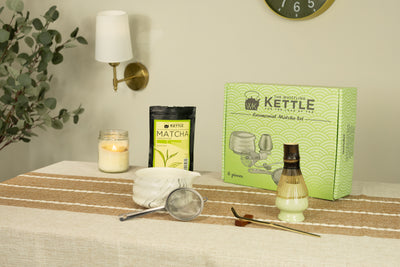Black tea originates from the Fujian Province of China, although other regions such as Yunnan also produce a large amount of black tea. Black tea became preferred by European tea drinkers, in part due to the Opium wars, as Great Britain sought out alternative growing regions to supply their global tea trade network. Consequently, some of their colonies, such as India, Sri Lanka (aka Ceylon), and Kenya, became top growing regions.
Table of Contents
Chinese versus Non-Chinese Black Teas
Black tea comes from the same tea plant, Camellia sinensis. However, there is another subvariant known as Assamica. In 1823, Assamica tea was introduced to the West by the Scottish adventurer Robert Bruce. While traveling through Assam, Bruce encountered wild specimens of the Assamica tea plant. After examining the tea samples back in England, it was determined that the tea was a different variety than the black tea monopolized by the Chinese in the international market. Seeking to gain a niche market, the British East India Company moved into Assam and began exporting Assamica tea back to England.
Processing Black Tea
As discussed in Tea 102: Tea Processing, black tea undergoes withering, rolling, oxidation, and drying. Black tea gets its name because it is generally allowed to fully oxidize, turning black in the process.
Grading Black Tea
The method of grading black tea varies by region.
Tea Grading in China
In China, grades are determined by leaf size, appearance, and quality. Different regions or particular styles may have their own grading systems. The most common system uses numbers, with #1 being the best grade. Some systems use an A, AA, AAA designation. There may also be references to harvest season or locations. It's important to note that it's not a one-size-fits-all system, and a #1 grade of a particular tea can taste different.
British Grading System
The British grading system is primarily used with teas from India and Sri Lanka. In this system, a series of screens are used to sort the leaves by size or characteristics. OP (Orange Pekoe) is a term for basic "whole leaf" tea and has nothing to do with flavor. GFOP (Golden Flowery Orange Pekoe) indicates lots of golden tips, and some of the leaves may look like crushed flower petals.
CTC Teas
CTC (Cut-Torn-Curl) is a variant of tea processing where the tea is cut into small pieces and rolled into very small tea balls (for example: Irish Breakfast).
Tea Grading Subjectivity
It's worth noting that in the real world, tea grades are very subjective and aren't indicative of better flavor. Most new tea drinkers are exposed to tea in the form of blends or flavored varieties, where the individual leaf size and shape have limited effects. Some premium varieties are not recommended for blending as their flavor is so distinctive that it overpowers the blend or it's simply wasteful to add flavor to them.
Single source teas are a little different, and as you consume different single origin varieties, you'll experience various flavor profiles. In some cases, paying extra for a higher grade is worth it, while in others, paying double for a grade that is only 1% "better" isn't worth it.
Taste
Black tea is known for its bolder flavors. Chinese variants can vary greatly, with Fujian teas offering sweeter cacao-like flavors, while Yunnan teas are earthier and maltier. Assam teas are bold and malty, forming the backbone of many "breakfast" blends. Darjeeling tea, known as the "Champagne of Teas," has different profiles depending on the "flush" or picking it originated from. Sri Lankan teas have a citrus-like astringency.
Black Tea Health Benefits
Assuming you don't add sugar to tea, black tea has numerous health benefits. While black tea isn't as high in the type of antioxidants found in green tea, it does contain a group called theaflavins that are developed during oxidation.
It's important to note that these health benefits are negated when sugar is added to the tea. While black tea by itself is a healthy way to hydrate, drinking sweet tea (particularly southern sweet tea) is one of the worst drinks you can consume, even worse than soda!
Heart Health
Studies suggest that regular consumption of black tea may help improve cardiovascular health. The antioxidants in black tea may reduce the risk of heart disease by improving blood vessel function, reducing inflammation, and lowering LDL cholesterol levels.
Stroke Risk
Studies show that drinking 2 cups of black tea daily may reduce the risk of stroke by 16%.
Focus and Concentration
Black tea contains caffeine (roughly half as much as coffee). L-theanine, present in black tea, also helps regulate caffeine absorption, avoiding post-caffeine crashes.
Blood Glucose Regulation
Drinking black tea can decrease blood glucose levels and help regulate sugar in the body. Research shows that black tea improves blood sugar levels immediately following meals in normal and pre-diabetic adults.
Flavoring
There are a wide variety of black teas that feature natural flavors, artificial, or a combination of both. Because the variety of flavors that can be added to a tea are virtually limitless, you can find teas made to taste like anything you can imagine!
Many black teas are ideal for flavored blends and pair well with various ingredients such as fruits, nuts, and chocolate. Good-quality black tea also makes a great summer iced tea.
Brewing Black Tea
Black teas usually require water that is close to boiling. Black tea also has the highest caffeine content among traditional tea types. Some stronger black teas, such as those from Assam, can often be paired with a spot of milk. Black tea can be brewed hot or cold, depending on personal taste.
Starting Your Black Tea Journey
We recommend sampling as many teas as possible. Start with flavored blends that appeal to you, and perhaps try a breakfast tea or two. Then move on to single origin teas. It can be a great event to share with friends or family members—a tea tasting!

